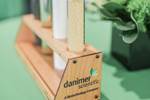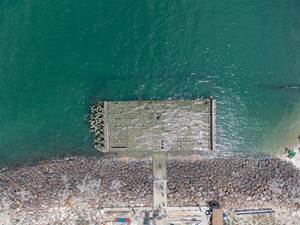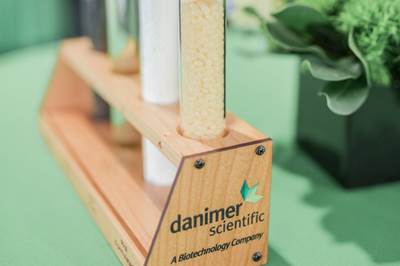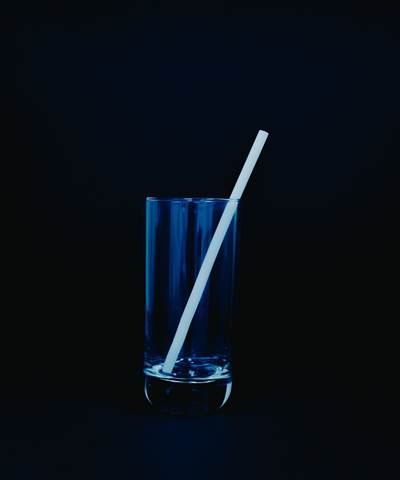How to Optimize Injection Molding of PHA and PHA/PLA Blends
Here are processing guidelines aimed at both getting the PHA resin into the process without degrading it, and reducing residence time at melt temperatures.
Share
Read Next
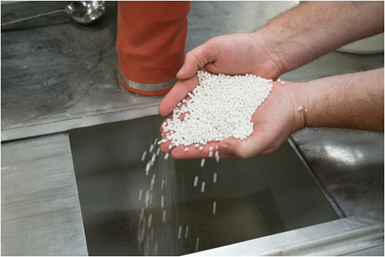
The processing of PHA resins in injection molding has its own rules but is not overly complicated. Photos: Danimer Scientific
In the world of biobased and biodegradable injection molding resins, the newest kid on the block is polyhydroxyalkanoates (PHA). It has been used for extrusion for some time in the manufacture of straws and extrusion-coated paper, but injection molding grades are increasingly gaining traction.
PHA resin combined with polylactic acid (PLA) can be a home-compostable resin that is biobased and biomanufactured. The PHA component is made by feeding various plant oils stocks to bacteria in a fermentation process. PHA is an energy storage molecule analogous to the fat that humans store in their bodies. After the bacteria have achieved optimum growth, the PHA is harvested and purified.
In its raw form, PHA is a fluffy white powder and not very useful for conversion into commercial products. However, when combined with processing aides or other biodegradable polyester resins like PLA, it becomes more friendly to manufacturing products with current conversion processes. Biodegradable and compostable end-use applications of injection-molded PHA/PLA include, but not limited to, cutlery, single-serve coffee pods, dental flossers and childrens’ toys.
The percentage content of PHA in a PHA/PLA blend can vary widely, depending on a number of factors. These include the customer’s targeted end-of-life desired outcome (home compostable vs. marine degradable), performance considerations and cost. As such, the product development team will design a specific blend based on the customer’s needs and how they plan to market their product, In most cases, the compounded resin will contain at least 50% PHA.
PHA is similar to some existing resins, but also has its own unique characteristics. Because of its shear-creating nature, it can resemble PVC in its propensity to cause temperatures to overrun in the compression zone of the screw, and its flow characteristics make it seem like nylon in its propensity to flash at the smallest of parting line defects. By the very nature of being biodegradable, PHA is a somewhat fragile polymer, and excess heat, above 400°F, can cause rapid degradation. Even prolonged exposures to temperatures as low as 350°F will begin to degrade the material.
PHA is similar to some existing resins, but also has its own unique characteristics.
The processing of PHA resins in injection molding has its own rules, but is not overly complicated. Keep an eye on temperatures and residence times, keep the material dry, use a warm tool and you should be able to build a process to run your parts.
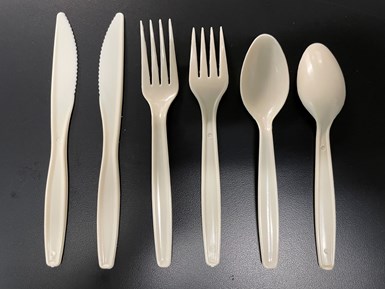
Cutlery is among the injection molded items being produced with PHA or PHA blends.
Key Considerations for Processing PHA and Blends
Most of the following processing guidelines are aimed at getting the resin into the process without degrading it, while others are aimed at reducing residence time at melt temperatures. The following guidance — for drying, purging and processing — relate to PHA resin but also to PHA blends, including PHA/PLA. As soon as you add even a modest percentage of PHA into a blend, its processing characteristics begin to dominate.
Drying: Because of the hygroscopic properties of PHA, drying before processing is required. A moisture content of less than 0.04% (400 ppm) is recommended to prevent viscosity degradation during processing. Recommended drying conditions are: four hours at not greater than 170°F (80°C) with a dew point of -40°F (-40°C), and an airflow rate greater than 0.5 cfm/lb of resin.
Purging: Before processing PHA, it is recommended that processing equipment be purged with LDPE (which has a low melting point) to remove any previous materials. This is followed by completely purging out the LDPE with the PHA material. This will also enable the PHA materials to remove the LDPE before processing begins. Purging with PP is not recommended unless LDPE is then used to remove any residual PP before transitioning to PHA materials. PHA can degrade quickly if left unattended within a heated barrel. Therefore, we recommend that any material left for longer than five minutes be purged with fresh material to ensure potentially degraded material is removed from the process. Recommended purging steps:
▪ Purge with LDPE at previous resin temperatures to remove any previous materials.
- 425-450°F (215-235°C)
- LDPE with a 10-20 g/10 min MFI is recommended.
- If applicable, purge hot runner with higher MFI LDPE (MFI target 18-20 range recommended).
▪ Decrease temperatures to 320-350°F (160-170°C), allow temps to stabilize at set point.
▪ Build process with LDPE to make full part.
- After process has been established with LDPE, purge to PHA.
- Process will be very close to LDPE with a longer cure time. (Reducing shot size slightly at start of PHA process is recommended to decrease chance of flashing or overpacking the tool.)
- If machine is down for more than five minutes, purge 5-8 shots to clear out potentially degraded material before restarting.
- If the machine will be down longer than 20-30 minutes, purge with LDPE to include hot runner; PHA degrades quickly and cannot be left in the barrel or hot runner for long periods of time.
Machine Setup and Hot Runner Systems
Here are suggested starting conditions and recommendations for hot runner systems. The ability to heat the mold is critical for proper performance of PHA. Inability to warm tool above ambient can result in decreased crystallization and poor processing rates.
▪ Starting conditions:
Feed Throat 310-330°F (155-165°C)
Feed Temp 320-340°F (160-170°C)
Compression Section 330-350°F (165-175°C)
Metering Section 320-340°F (160-170°C)
Nozzle 310-360°F (155-180°C)
Mold Temp 105-140°F (40-60°C)
▪ Hot runner systems: If tool uses a hot runner system, we recommend setting temperatures as an extension of the nozzle. The hot runner should carry the material forward but not be used to add heat. Because these systems are designed for specific materials and tolerances, we always recommend reviewing upper and lower temperature limits with the manufacturer to avoid issues.
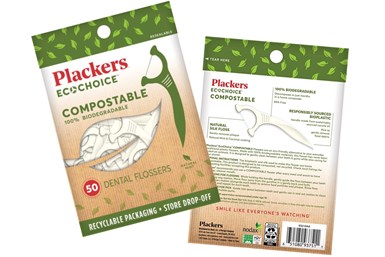
Used for extruded products such as straws and extrusion coated paper, PHA and blends are gaining traction in injection molding with products such as dental flossers, childrens’ toys and coffee pods. Photo Credit: Plackers
Overall Processing
The processing of PHA resins in injection molding has its own rules but is not overly complicated. Keep an eye on temperatures and residence times, keep the material dry, use a warm tool and you should be able to build a process to run your parts.
PHA-based resins are extremely sensitive to temperature changes, so great care should be taken to ensure recorded temperatures match set point temperatures upon transition to PHA resin. Starting at the lower range of temperature profile is recommended. Temperatures can be gradually increased, if needed, to enhance processing or improve product quality. Changes in set points to increase or decrease melt temperature should be small — think 2-3°- changes.
The ability to heat the mold is critical for proper performance of PHA.
Injection speeds should be as slow as possible to fill part to avoid shearing the material; hold times will be longer than seen with other common resins because of slower gate freeze times. The additional time can be subtracted from cure times. During extended runs, the material will off-gas similar to other resins, the easiest way to clean the vents and mold surfaces is with a rag dampened with warm water; most of the off-gas components are water soluble.
PHA resin is shear sensitive; some high-shear screws may cause reduction in material performance or viscosity. Low compression screws with standard general-purpose designs are recommended for this conversion process. Screw speeds should be set as slow as possible while remaining in cycle.
About the Authors: Russell Mullins is Danimer Scientific’s special operations technical advisor and has more than 45 years of experience in plastics injection molding and product design. Ryan Mullins joined Danimer in 2019 as assistant development engineer and previously worked in aviation engineering. Contact: (229) 243-7075; russellmullins@danimer.com; www.danimerscientific.com
Related Content
CJ Bio’s Amorphous PHA Demonstrates Excellent Biodegradability in Marine environment
The tests of the bioplastic, a semi-crystalline PHA and a PLA were conducted by the national Korean testing agency (KCL)
Read MoreHow to Extrusion Blow Mold PHA/PLA Blends
You need to pay attention to the inherent characteristics of biopolymers PHA/PLA materials when setting process parameters to realize better and more consistent outcomes.
Read More50 Years...600 Issues...and Still Counting
Matt Naitove marks his first half-century in plastics reporting, with a few of his favorite headlines.
Read MoreBlend Amorphous PHA with PLA to Improve injection Molded Part Properties
Adding aPHA to PLA can boost a range of mechanical properties and expedite composting. Here are the details as well as processing guidelines for injection molding the blends.
Read MoreRead Next
Danimer Scientific and Total Corbion PLA Collaborate on Production of Bioplastics
This strategic collaboration will support long-term growth of bioplastics production requiring a blend of PHA and PLA inputs.
Read MoreDanimer Scientific and Eagle Beverage to Produce Biodegradable Drinking Straws for Quick Service Restaurants
Private label manufacturer Eagle Beverage to use Danimer Scientific’s Nodax PHA for marine degradable straws and other product categories in the future.
Read MoreDanimer Scientific Strengthens Bioplastics Market Position Through Merger
PHA bioplastic producer Danimer Scientific completes business merger with Live Oak Acquisition Corp.
Read More

